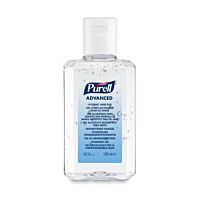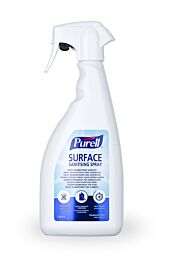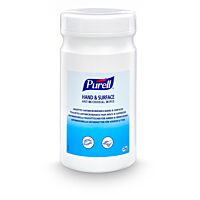The year got off to a capricious start, especially on the weather front - snowfall, ice and a rapid drop in temperature kept the whole of Germany on tenterhooks for a few days in many places. The winter we missed at Christmas has suddenly arrived, and with it, the increased incidence of colds, coughs and hoarseness. Because as soon as cooler weather arrives, the peak period for the spread of colds and flu begins. But why is this actually the case?
One plausible explanation would be that we spend more time in schools, offices and generally indoors during the day when it is cold and cloudy outside, which means poorer ventilation and closer interpersonal contact. A cold or other respiratory virus can then be more easily transmitted to others. Even if this reason is more than plausible, there is a little more to it.
From the immune system to the nose
Our immune system is the most important defence against external intruders, including pathogens such as bacteria and viruses. The body's immune system is quite complex - it consists of many different organs, cells and proteins that work together to fight germs. However, one organ clearly stands out in terms of its importance in the defence against cold viruses: our nose.
Our nose - the gateway to the outside world
Our nose is one of the first gateways between the outside world and the inside of our body. The upper respiratory tract (nose, mouth and throat) is often the first part of our body to be exposed to germs, as we inhale droplets containing viruses and bacteria from the coughs and sneezes of infected people around us. In its role as our body's gatekeeper, the nose is also our first line of defence against germs, with the inside of the nose (especially hair and mucus) acting as a physical barrier. The cells in the nose also act as conductors of the body's immune response, switching on and off as required. Our noses therefore have biological "sensors" that recognise when we are exposed to viruses. These switch on the cells of our immune system to launch a direct attack against the intruders.
The biology of our nose
When we are exposed to viruses and our immune system is activated, biological "pouches" in our nose swarm to the area where the viruses are located - a kind of emergency antimicrobial response. These sacs are called extracellular vesicles or "EVs". They come in different sizes and with different contents. EVs also have two important functions to protect us from germs. Firstly, they can bind directly to the virus and prevent it from infecting our cells. Secondly, some EVs carry antiviral substances in their pouches, so-called microRNAs or miRNAs. When these are released from the EV, they attack the virus to deactivate it. Through these two effects, EVs protect us from infection.
The impact of winter
But how does the cold weather fit into the picture? The question is, what happens when the cells in our nose get cold, and how does this increase our risk of infection? The nose itself reacts very sensitively to temperature fluctuations, as we have all certainly felt at some point. Cold, dry air can irritate the inside of the nose, causing our nasal glands to produce more mucus to keep it moist. This causes the nose to drip and "run" in cold weather. Other cold-sensing proteins on the cells of our nose are triggered by the cold and can cause other sensations such as burning, tickling and a feeling of constriction.1,2
A study sheds light on the darkness
A study published in 2022 by scientists from Harvard and Northwestern Medical Schools3 showed that cold air actually prevents the EVs from working their magic and protecting us from infection! When the scientists lowered the temperature of the cells or exposed the subjects to lower temperatures, they found that the EVs did not swarm to the site of infection as they should. The EVs that were already at the site of infection also did not function properly. A specific miRNA, called miR-17, was missing from the mixture of EVs, which is crucial for inactivating the common cold virus. The scientists' finding therefore boils down to the fact that the cells and "pouches" in the nose do not function optimally to fight germs at low temperatures. This means that we are all at a higher risk of viral infections in the winter months.
What we can do to stay healthy
Whilst we can't do much about biology (or the weather), we can take simple steps to prevent the spread of germs even in low temperatures:
- ensure good etiquette when sneezing and coughing (i.e. elbow or hand in front of mouth)
- wash or sanitise hands frequently – when out and about, PURELL® Advanced Hygienic Hand Rub is available in convenient formats such as a a hand 60ml pump bottle and a 100ml flip top bottle
- sanitise hard surfaces regularly, as they could be contaminated with germs
- stay at home if you feel ill
1 Liu SC, Lu HH, Fan HC, Wang HW, Chen HK, Lee FP, Yu CJ, Chu YH. The identification of the TRPM8 channel on primary culture of human nasal epithelial cells and its response to cooling. Medicine (Baltimore). 2017 Aug;96(31):e7640.
2 Damann N, Voets T, Nilius B. TRPs in Our Senses Review. Current Biology 18, R880–R889, 2008.
3 Huang D, Taha MS, Nocera AL, Workman AD, Amiji MM, Bleier BS. Cold exposure impairs extracellular vesicle swarm–mediated nasal antiviral immunity. The Journal of Allergy and Clinical Immunology. In press; published online: December 06, 2022.
















